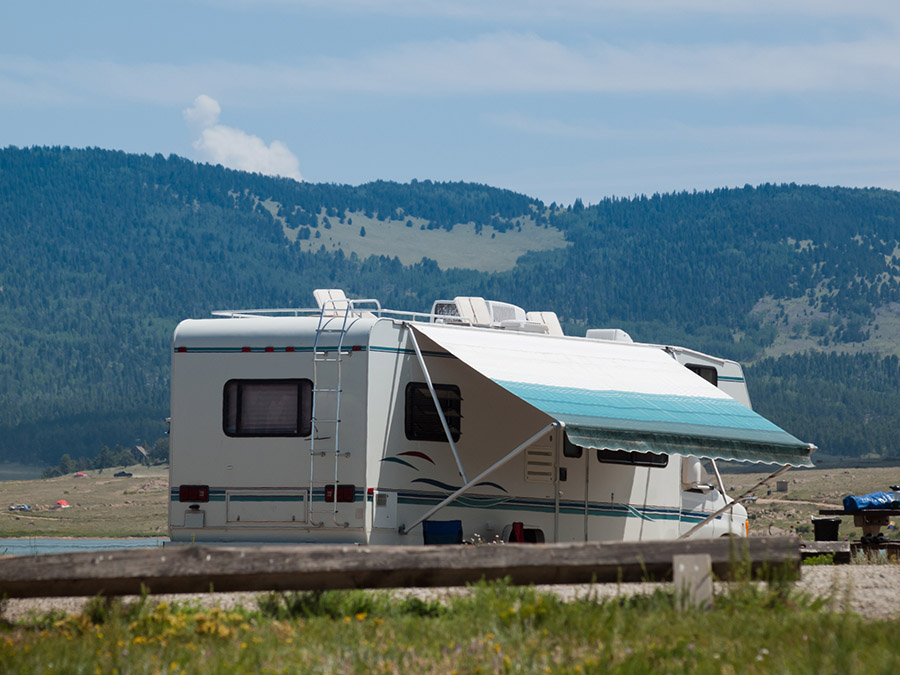RV awnings versus the elements — protect your shade-maker with some common sense.
Patio awnings are popular accessories on most RVs. Just about every rig has at least one awning, which come in a variety of colors, makes and structural configurations. There are manually operated models as well as remote-powered types. RV parks are awash in a sea of colors on bright sunny days as awning fabrics move gently in the summer breeze.
But, like all accessories and RV features, care and proper operation is important. A light breeze that freshens to even a modest wind can cause violent movement to any awning. The wind’s pressure becomes magnified as the large canvas webs thrash about. High gusting winds can be damaging to these shade producing wonders.
RV Awnings — Safety First
How much wind is too much? Well, though this can vary greatly depending on make, model, and windage size, a general rule would be about 20 mph.
An Arkansas Campsite. Photo by Warren Price Photography/Getty Images/iStockphoto
Heavy rain falls can strain the awning frames if not angled to allow flow off. In addition, wet furled fabrics can become mildew-stained over time.
So, how do we get the most out of our awnings while safeguarding them from the environmental risks?
- If the weather looks at all iffy, check local forecasts to determine the wind’s predicted direction and speed. Pay special attention to any gusty wind conditions.
- Don’t leave extended awnings out if you’re not going to be in the RV park to attend the situation. This includes automatic power-retract models. A fast-approaching squall line or a wind micro-burst can destroy an awning quicker than any retract motor can reel it in.
- Be sure to trim your awning to shed water. Excessive water pooling weight can exceed the awning’s structural integrity.
- If you put your awning away in the rain, or if it was wet by any other reason, be sure to dry it out later. Extending the awning to dry and air it out will keep the fabric clean and bright.
- Furl your awnings if any nearby campfires are producing glowing ash that may reach your site.
Proper care for your awnings can keep them looking new for years to come.
Peter Mercer — with a shady view
